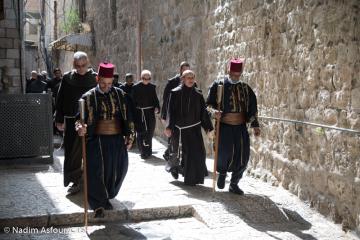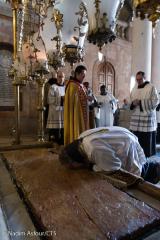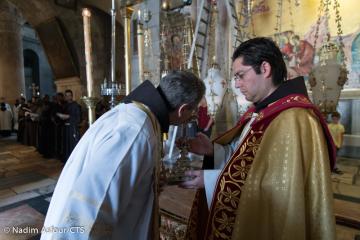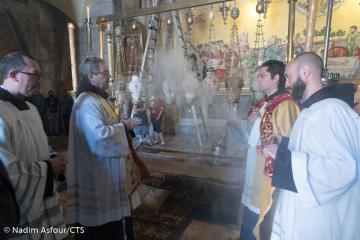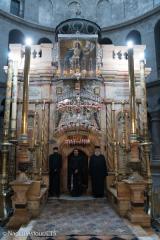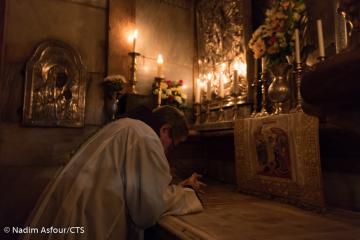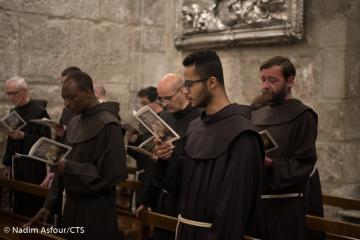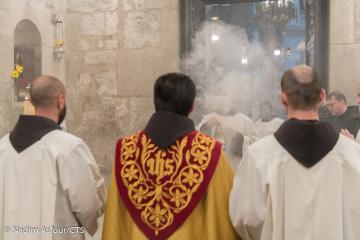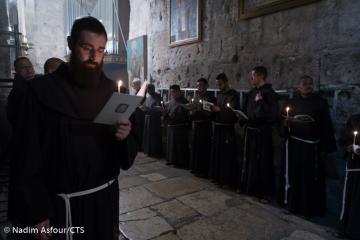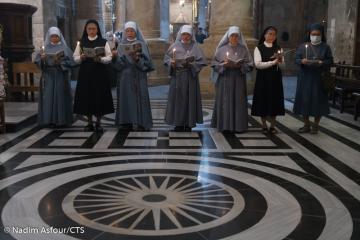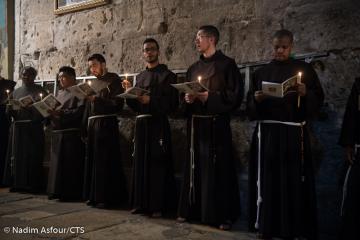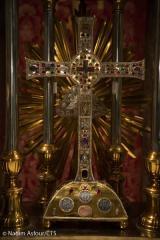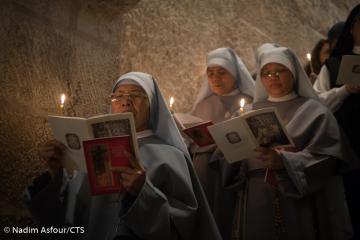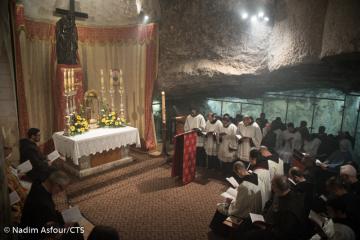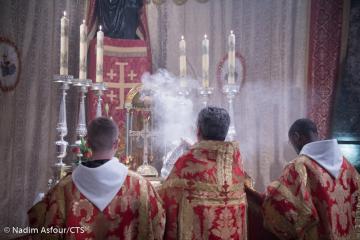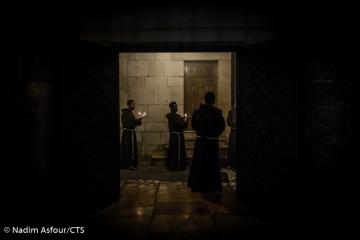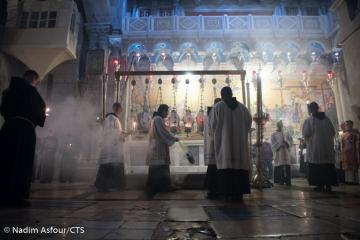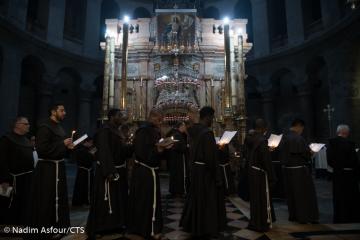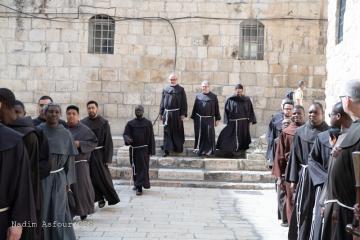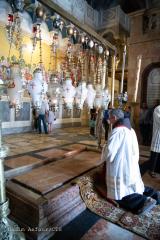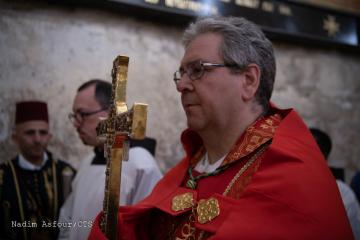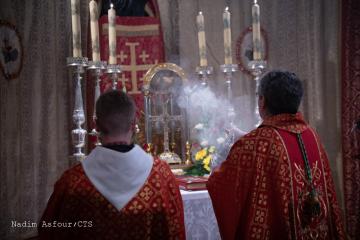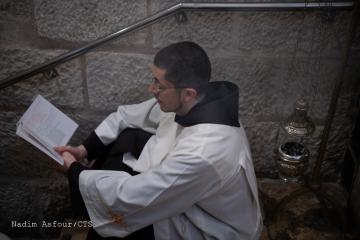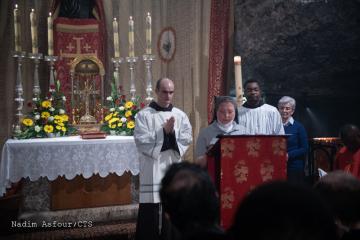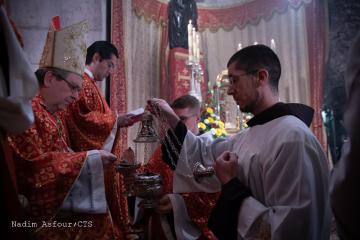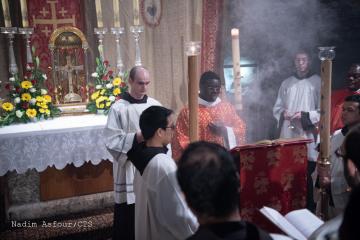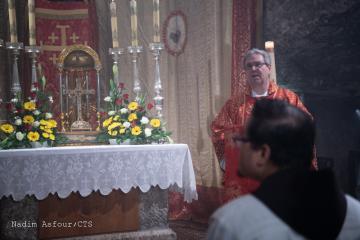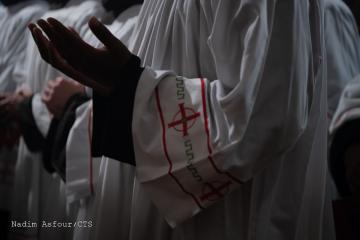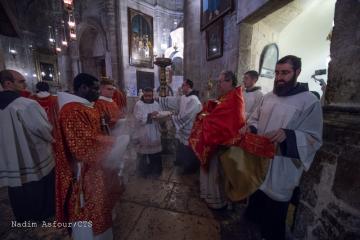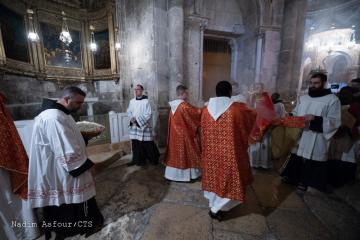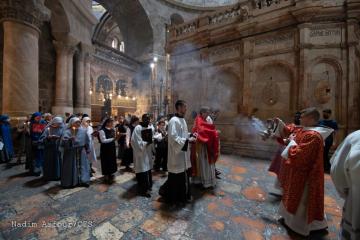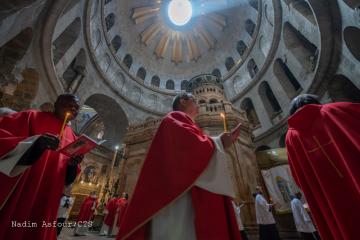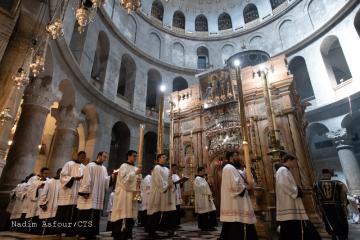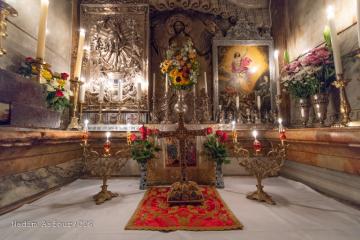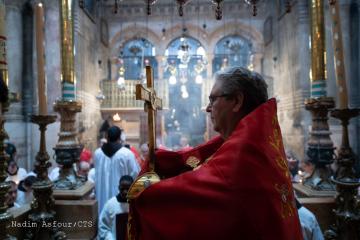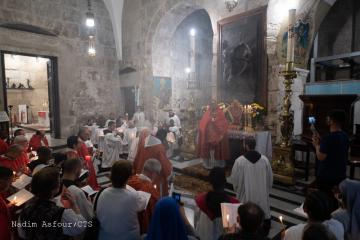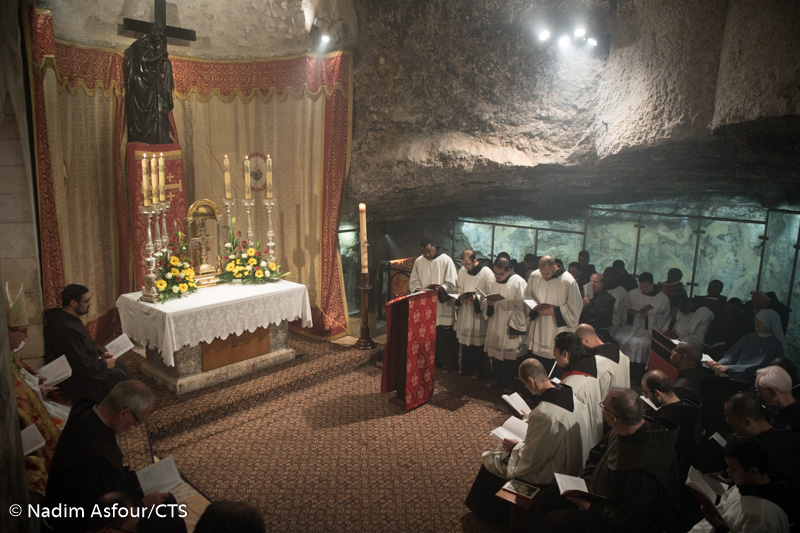
In the basilica of the Holy Sepulchre in Jerusalem, a chapel in the depth of the church recalls the discovery of Jesus’s Cross. To honour this Holy Place, the Church of Jerusalem has kept until today the ancient feast day dedicated to the Discovery (inventio, from the Latin) of the Holy Cross, a feast that was suppressed by the liturgical reform of 1969.
The celebration at the Holy Sepulchre falls every year on 7 May, in memory of 7 May 351, when an enormous illuminated cross appeared in the sky, above the Holy Golgotha, stretching as far as the Mount of Olives, as St Cyril of Jerusalem recalls. The same Saint mentions the event of the invention, or discovery of the True Cross by the mother of the Emperor Constantine, St Helen, in Jerusalem in 326, in a place not far from Calvary. It was there that there as a quarry, where the cross of Christ was said to have been abandoned.
During the procession that takes place every day in the basilica of the Holy Sepulchre, on the day of the Vigil of the solemnity, the friars stayed longer than usual in St Helen’s chapel. There, wearing red and gold vestments and before the relic of the True Cross, the Custos of the Holy Land, Fr. Francesco Patton, presided the First Vespers, in the presence of the Franciscan brotherhood of the Holy Sepulchre.
In the early hours of 7 May, with the reading of the vigil of the feast taken from the History of the Church by St Rufinus, the Franciscan friars of the Custody then went over the episode of the discovery of the True Cross: St Helen was able to recognise the true cross of Jesus from the three found, because it healed a woman who was severely ill.
“There is the risk that in this world, even we Christians lose the sense of the Cross and we have to rediscover its value,” said the Custos of the Holy Land, in the homily of the solemn mass on 7 May. “We have to find the Cross again, a little like St Helen, and find the true one! Because not every Cross heals and saves, but only the one of Jesus.”
Fr. Francesco Patton then wanted to recall the Popes who spoke against the trend of the secularized world to remove or empty the Cross of Christ of meaning: from Paul VI in 1969, to John Paul II in 1994, up to Pope Francis. On 27 March 2020 the Holy Father prayed on the esplanade of St Peter’s in Rome, in front of an image of the Crucifix, and said, “We have an anchor: in his Cross we have been saved. We have a helm: in his Cross we have been redeemed. We have a hope: in his Cross we have been healed and embraced so that nothing and nobody can separate us from his redeeming love.”
“Today, as in the times of St Helen, we need to discover the Cross of Jesus if we want to experience the healing of the heart and salvation, if we want to continue living with hope and we want to find a Paschal sense to our own sufferings and crosses,” concluded Fr. Patton.
At the end of the Mass, the relic of the True Cross was taken in a procession in the basilica, going around the empty tomb of Christ three times, while the friars sang the famous hymn to the cross: “O crux, ave, spes única! / Paschále quæ fers gáudium”, “Ave o cross, sole hope/ that you bring Paschal joy.”
Beatrice Guarrera


